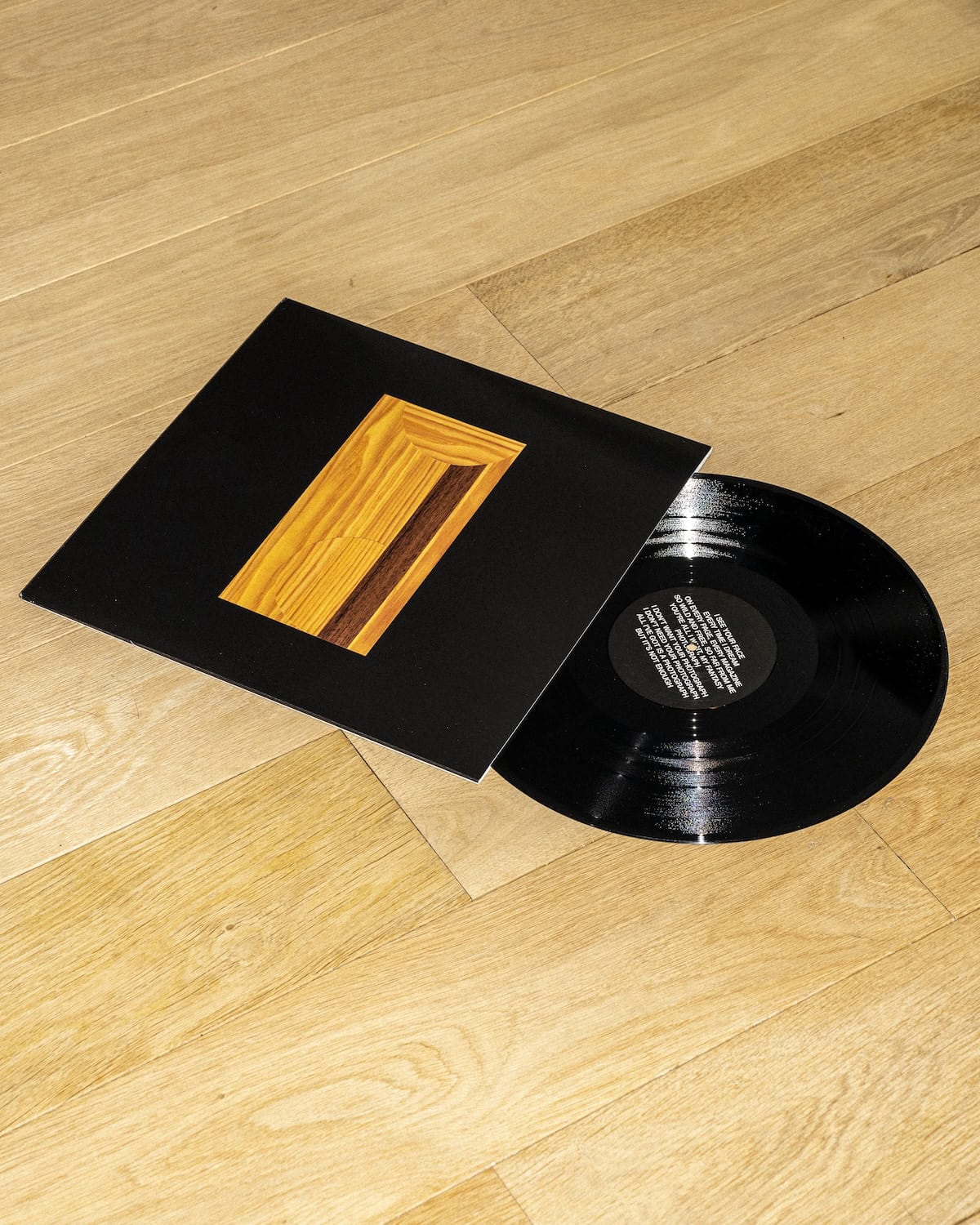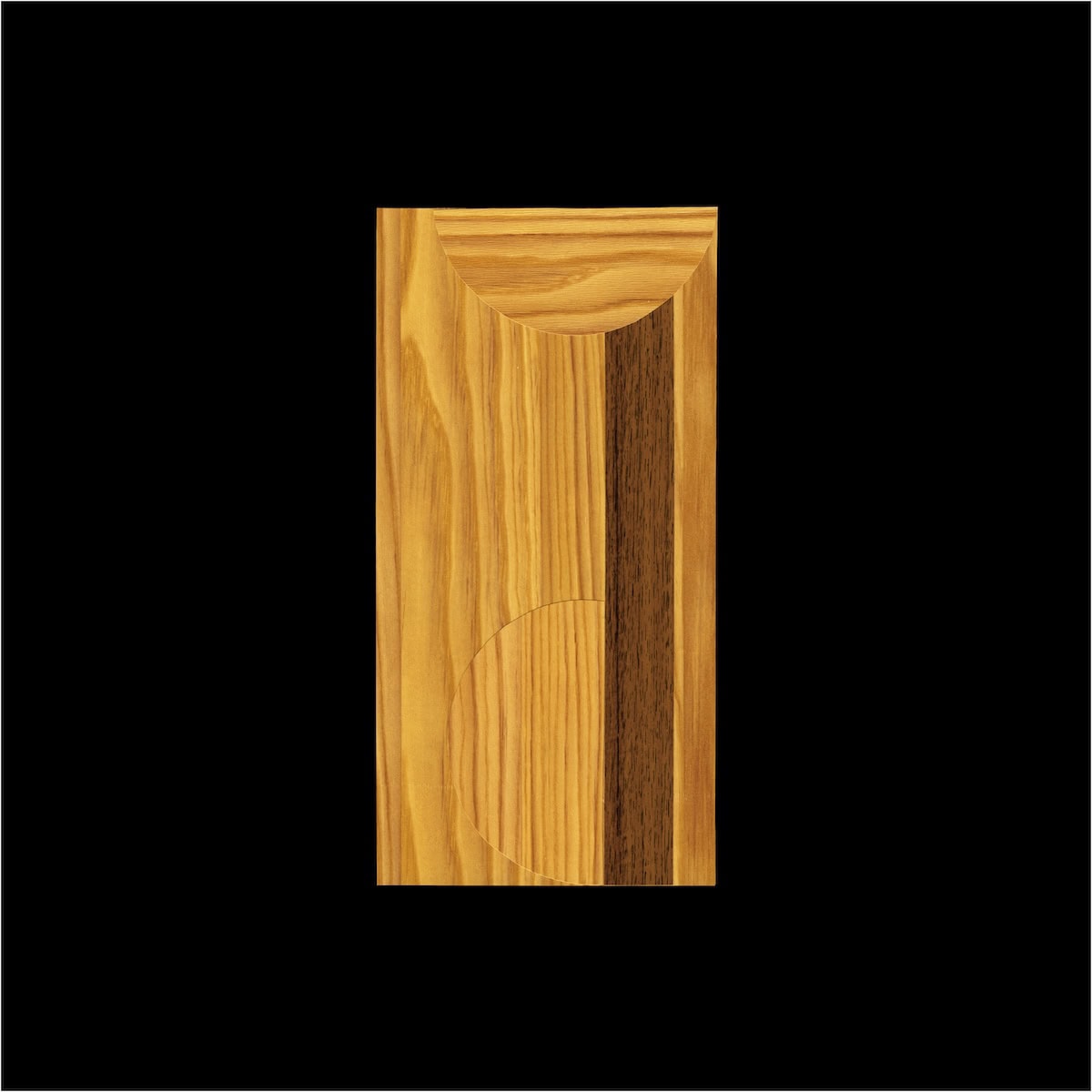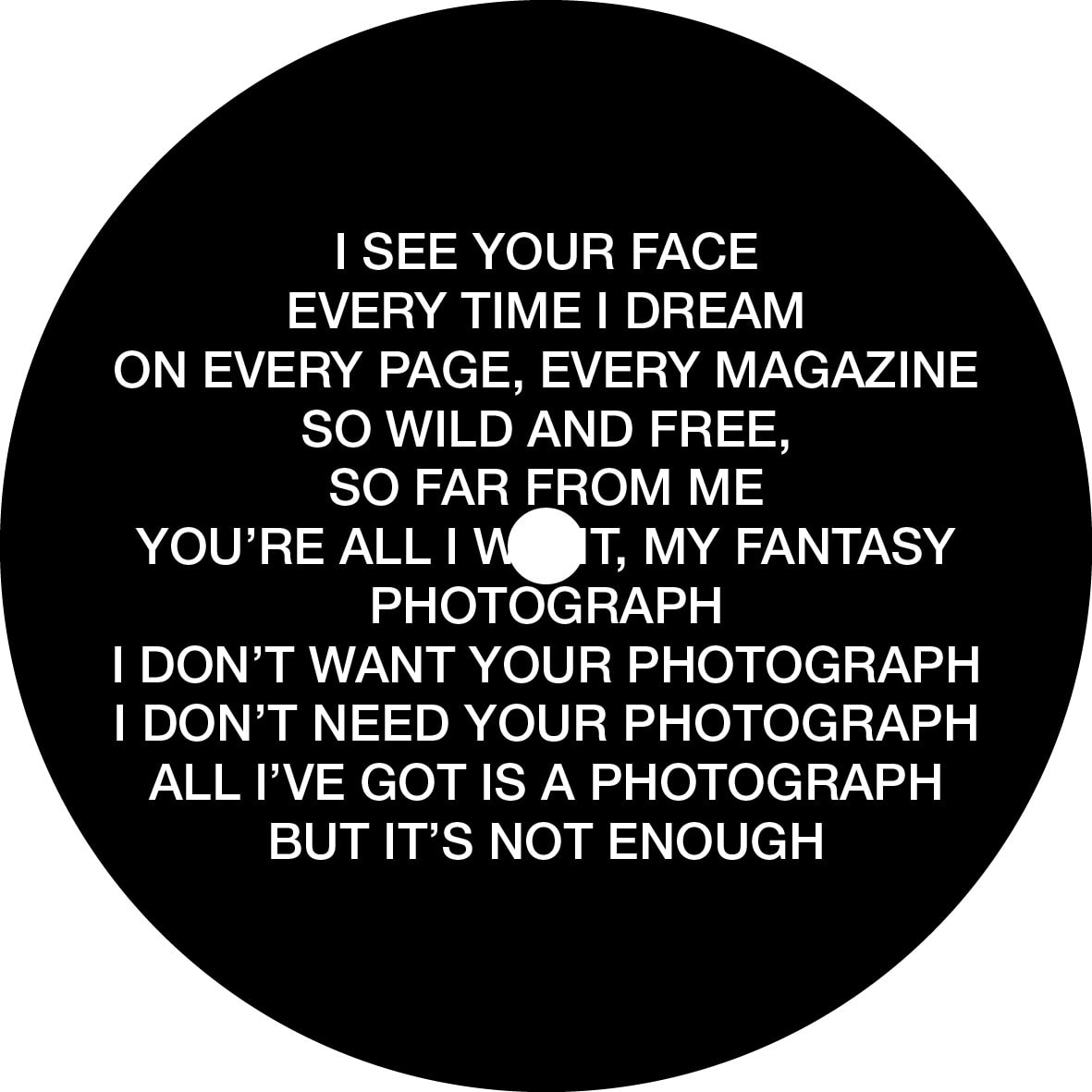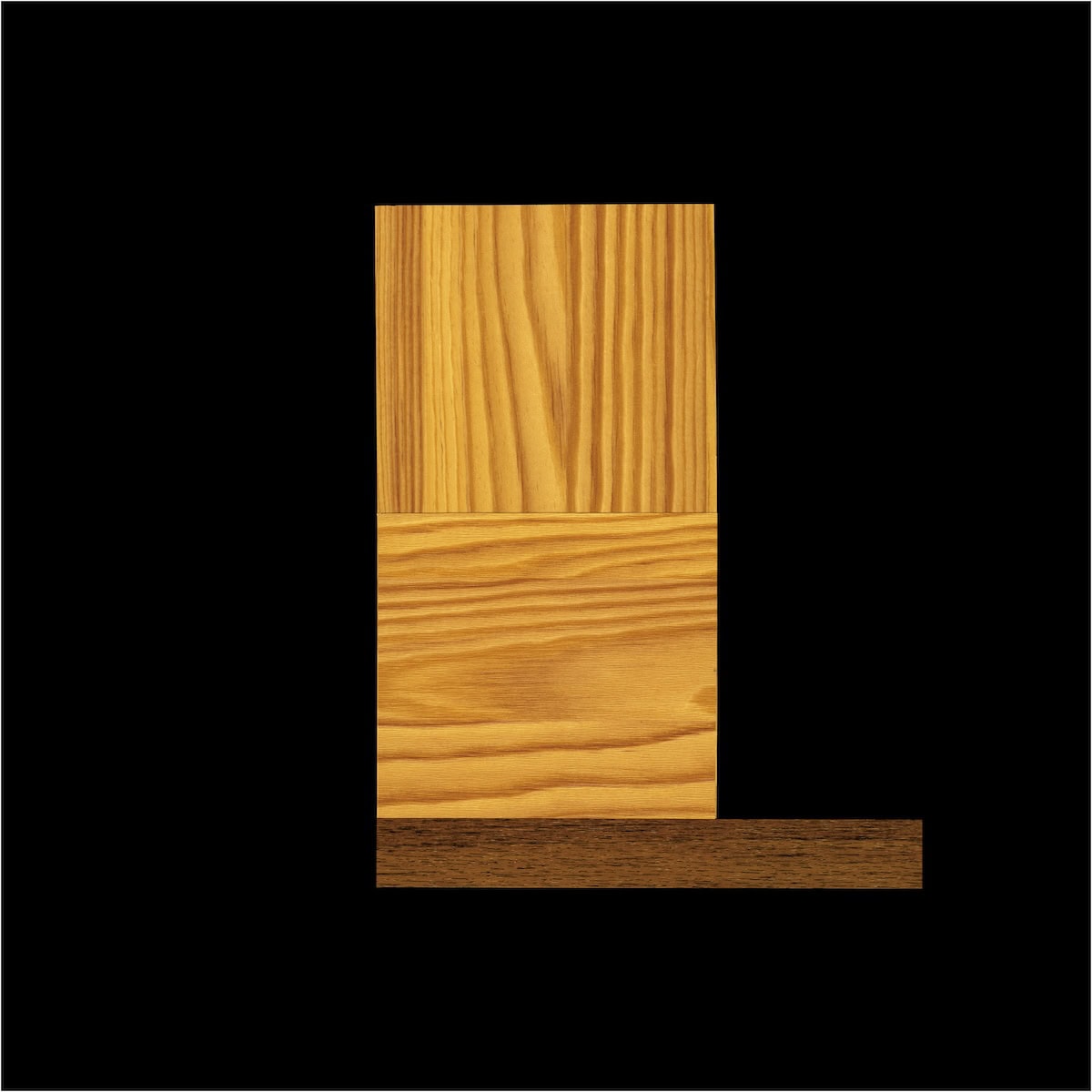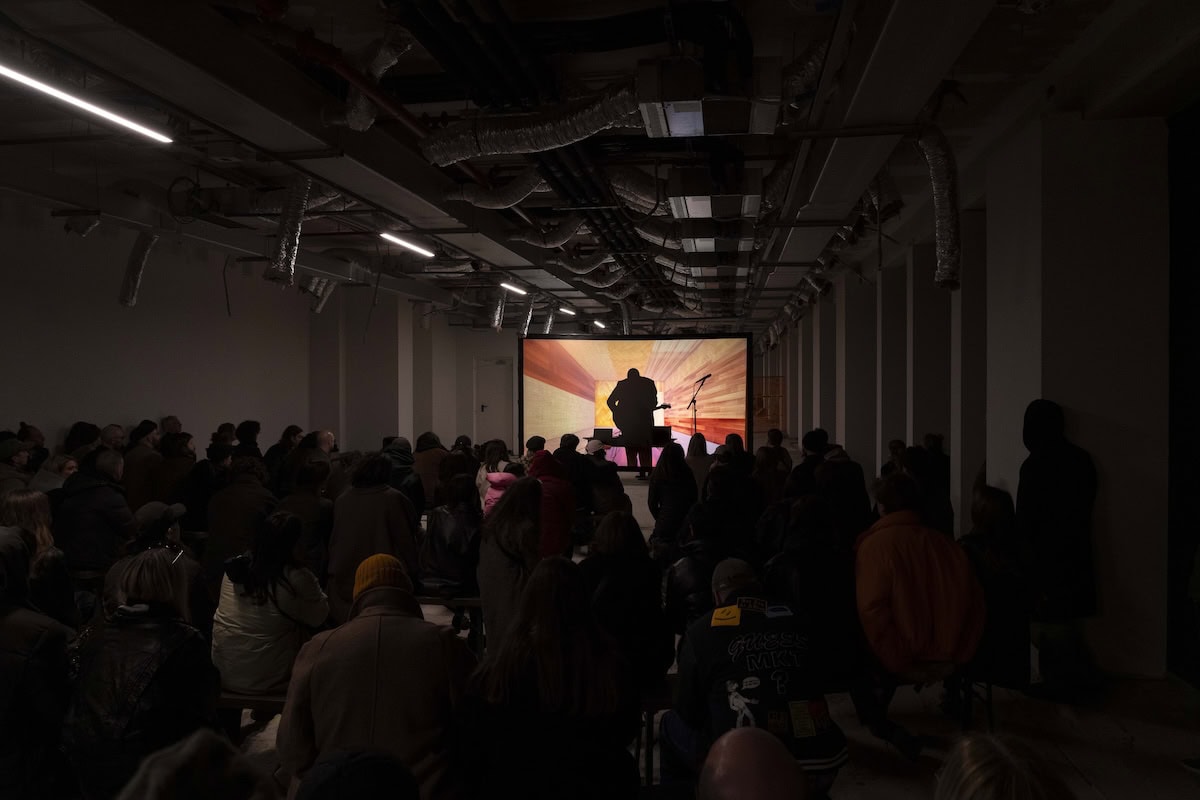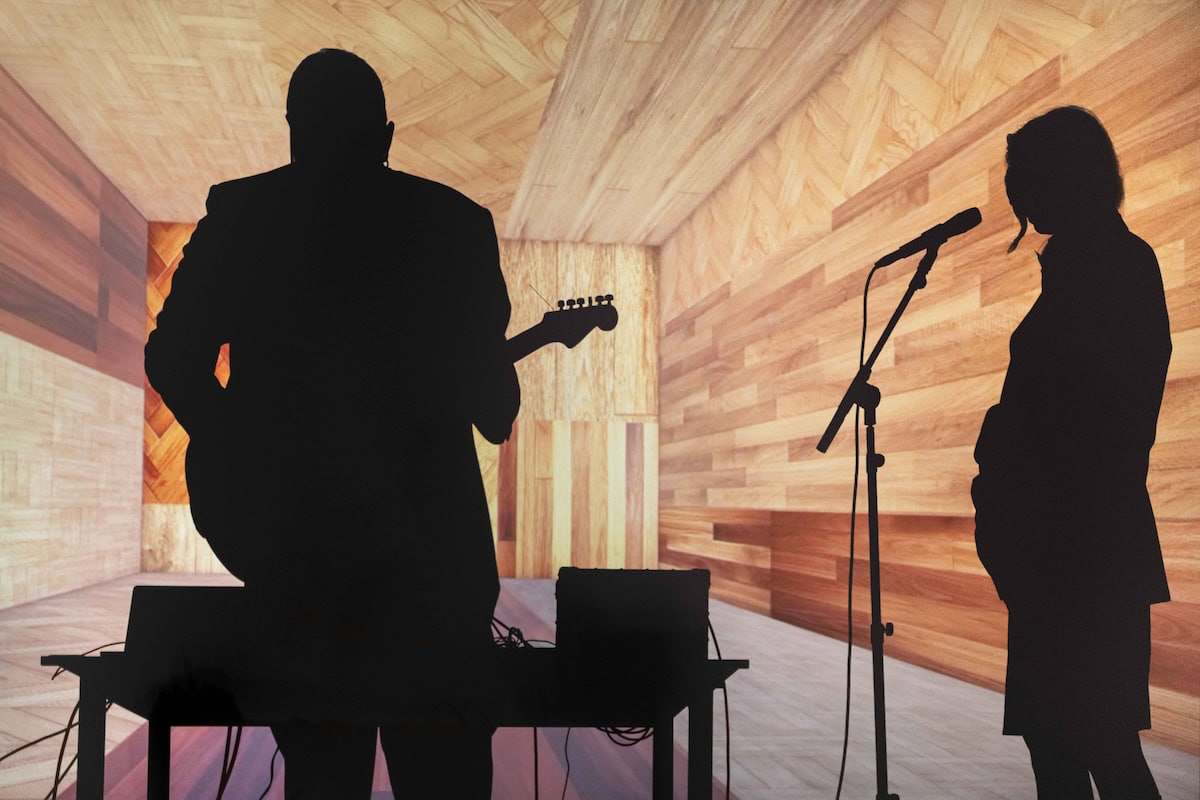Standards of Living is one of the latest multimedia works by artist Fabrizio Vatieri. It’s naturally placed as the sonic epilogue of a trilogy of performances dedicated to the themes of work and the relationship between human beings and space, made between 2017 and 2019: Dominare spiritualmente il progresso, Buchi nell’acqua, Lo scherzo.
The multimedia nature of the work arises from the combination of recorded music, live performance, and video projection of parquet spaces and surfaces, thus defining a sound, visual, and exhibition environment. The concept is the utopia of contemporary comfort, which induces society to realise the forms of living in what are now fictitious standards: the authentic charm of the parquet floor is lost in favour of replicas made of synthetic materials and adhesive laminates, which now proliferate in the construction market due to their cheaper costs. These printed images from a single infinitely replicated photograph of wood become, together with music, the experience of an ideal journey inside a faux parquet flooring showroom.
Recorded between 2021 and 2022 between Milan, Luxembourg and Naples, Standards of Living takes its title from a verse excerpted from band Roxy Music’s In Every Dream Home a Heartache track. The verse is recited in the first track of Standards of Living, Showroom Intro by the voice of Lauren Wetmore herself. The abnormal love for an inflatable doll sung by Roxy Music, that “your skin is like vinyl” runs parallel to the ersatz synthetic floors that unfold as the album opens. A cadenced guitar loop traces a slow but sustained rhythm over which Lauren Wetmore’s voice is transfigured into a masculine-feminine double.
Approaching, evokes minimalist Steve Reichesque’s architectures in a mesh that is opened and then broken by a fluid guitar loop that dialogues with the Roland Alpha Juno II synth creating a question/answer dialectic or harmonious echo between acoustic and synthetic. The whole is then reabsorbed into the reverberated landscape of the opening. The following track Surfing Utopia is tinted by acid hues in which rhythmic accents tighten the listener in a jagged space over which the guitar sound is deconstructed into bending, flying over strings and rock riffs. In the title track, a reminiscence of Roxy Music returns with variations on the theme, which accumulates in an underlying reverberation creating the atmosphere of a warm, melancholy-toned ambient.
Geometries and guitar architectures reappear in The Budget: they’re fluid rather than solid, well dragged along by saturated synthesizer chords and short melodic incisors, which open up to something deeply suspended and intimate thanks to electric broadsides.
The Awareness gives way to more grunge guitar distortion than in any other track on the album after a relaxed beginning in ascending arpeggios; all, however, always hinted at in riffs and loops that build up and overlap.
Finally, the photographic theme from which much of Vatieri’s research stems is found at the album’s conclusion with the track Photograph, which quotes in its guitar arpeggio and lyrics the Def Leppard single of the same name, in which all that remains is a photograph, this trace, this sepia bone of something else that we would like but do not possess. Through loops of arpeggios and guitar solos, a Roland Alpha Juno II synth, small incursions of haunting rhythms, Standards of Living is a work that de-constructs the very aesthetic and sound of a certain AOR (Adult Oriented Rock). A record in which the “less is more” attitude of a few instruments and careful electronic timbres invites one to discover with a magnifying glass the sorts of spaces that Vatieri has managed to soundproof.
Mirko Zambelli: Are the quotes to Roxy Music and Def Leppard an inspiration to poetically express these “standards of living” or do they also become an homage and inspiration to a British rock that then takes on an echo in the music of the album?
Fabrizio Vatieri: The first music I listened to independently as a teenager, therefore researching about it, was rap, and this thing I think has influenced my playing a lot then in the following years, especially when I think about this record. The gesture is therefore to sample, to play variations on the theme of tracks that I think have an affinity with my artistic research, as happened for example for the soundtrack of the performance Dominare spirituualmente il progresso (Nowhere Gallery, 2017) where I produced Lucio Battisti’s Il monolocale in a funeral march version. In general I am always interested in songs that talk about architecture and domestic spaces, in the case of Roxy Music of which I have always been very fond, the track from which I borrowed the title of my work is In Every Dream Home a Heartache, of which there is an excerpt in the lyrics of Showroom Intro and in the track Standards of Living there is a variation on the theme of the first two guitar riffs, while instead of Photograph by Def Leppard I literally remade the guitar arpeggio present in the refrain, as if Christopher Cross were playing it, although in this case it is not a description of domestic spaces but of photography and desire, a concept that recurs throughout the research of Standards of Living, the surrogates of parquet flooring and therefore the whole discourse on domestic comfort are often represented by an image of wood or other organic materials, and therefore by a photographic reproduction.
MZ: What role does the guitar, often a soloist, play in relation to other electronic sounds? Is it absorbed into the flow of loops and thus into systems of reproducibility, into synthetic spaces, or does it remain a personal voice of melancholic protest against these mechanisms?
FV: Rather than a voice of melancholic protest, I think with respect to the research behind the record, the guitar is the most appropriate instrument, when I think of the whole AOR universe, especially the arpeggios and solos that are then the element that I chose to isolate from that musical context by making them dialogue with a more commonly defined ambient structure
MZ: The title track opens a melancholic but warm-toned and hopeful harmonic glimmer; do you think the role of music in addition to photographing the fictions around us should also be a harmonic engine of social coexistence and thus evoke an ideal space and high ideals?
FV: Standards of Living is thought of as the soundtrack to a showroom of faux parquet floors, or better yet (this is also evident from the sequence of track titles) it is the soundtrack that accompanies the stages of a ‘journey’ within the showroom. This is what I wanted to describe, in all honesty I do not feel that I am entrusting any role to music, each of us establishes our own relationship with listening, which is often borrowed from places, devices, emotional states, volume, especially if we are talking about certain sounds such as those on my record.
MZ: The recording of the album took place between three different cities, Milan, Luxembourg and Naples; how do you think that the physical presence of these different spaces can spill over into the tracks? Are these tracks also a sonic photograph of those places?
FV: There is no sound photography of any particular real place, as I told you we are in a flooring showroom, but these are the cities I have lived in the most over the years, so there is probably a relationship with domestic space more than urban space.
MZ: Do you have a background as a musician in a band or has the guitar always been a solo instrument for you as an intimate expression?
FV: The guitar is the musical instrument with which I have always felt most comfortable especially in private, but apart from rare appearances with Al Doum and the Faryds (with whom I played for a few months in the past), the instrument I instead played the most even in my historical band the Ne Travaillez Jamais (still existing), was an alpha Juno 2 synthesizer, so I was very keen to play a record where the guitar was at the center. A few years ago a record of my own came out on cassette for Korper Leib under the name Polveriera, I play as a DJ between the radio listening dimension and now and then in more dance-like situations. Music has always been central in my life, but I don’t consider myself a musician.
MZ: Looking at Standards of Living, why do you think of it as an epilogue to the performance trilogy, Dominare spiritualmente il progresso, Buchi nell’acqua, Lo scherzo?
FV: In short, the trilogy reflects on the themes of domestic space and the concepts of photographic reproducibility, so it seemed natural to me to give this role to the project because it closes the cycle.
MZ: Can you tell us about the performance held at SPRINT on November 25?
FV: I presented the record with a performance, during the last edition of Sprint Milano during a focus on Union Editions (the label that released the record). The performance consists of a concert of about 30 min accompanied by the projection of a video (designed by me and made in CGI by 3d Artist Martina Maresca) of an environment in which different parquet surfaces flow, a loop basically with micro variations every minute or so. The performance concludes with the last track of the album Photograph in which both on the record and in the live performance there is the voice of artist Alberte Agerskov. This is the live performance that I will be taking around for the next few months, and it is a preview of what will later be the more expository version of Standards of Living.
Fabrizio Vatieri (Naples, 1982) is an artist and photographer, trained as an architect. His artistic practice is based on different disciplines including performance, music and photography. In Milan, in addition to his profession, he is co-owner and art director of Palinurobar. He plays as resident DJ at RadioRaheem Milan, and Radio Alhara Bethlehem. His research focuses on the relationship between the human hand, architectural space and natural phenomena and investigates the meaning of work as human performance and its relationship to the poetic and spiritual dimension of the individual. His works have been exhibited in public and private institutional contexts in Italy and abroad including La triennale di Milano, Fondazione Morra Greco, Thessaloniki Museum of Photography, Fondazione Sandretto Re Rebaudengo, CareOf, Fondazione Forma, SiFEst, Nowhere Gallery.
